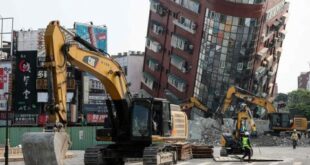Alberta government eyes hydrogen cars in a world that's gone for plug-ins

Danielle Smith believes in a bright future for zero-emission vehicles, of the sort that virtually no one uses in Alberta today.

Remember in the middle of Alberta's Hot Donair Summer, when the premier walked hand in hand with somebody in a buzzworthy government surplus costume through a food festival?
She proudly commuted to Taste of Edmonton in a hydrogen fuel cell electric vehicle.
"They're pretty zippy. They work pretty well," Smith would say later.
Not only is she confident that Alberta will embrace the hydrogen car, she also told her Your Province, Your Premier call-in show audience that she wants the next vehicle she purchases to be one, too.
Sure, there are nearly 9,000 electric vehicles on Alberta roads, and hundreds of charging stations. Ahead of Ottawa's 2035 ban on selling new petroleum-powered vehicles, Smith wants a different ride to net zero.
"I think our solution for zero-emission vehicles is hydrogen — and they're already here," she said on the radio.
Smith has embedded this enthusiasm into government action, mandating her Service Alberta minister to pursue a network of hydrogen fuelling stations across the province, up from the zero publicly available now. The province is commissioning an analysis into the potential conversion of all or part of the government's 3,400-vehicle fleet to hydrogen — from sheriffs' cruisers to Alberta Forestry and Parks ranger trucks.
Alberta might even try to woo Toyota or Hyundai "to come to our province to build a car manufacturing plant," said Smith, premier of a province thousands of kilometres from anything even faintly resembling an auto industry.
Unplugged
Smith isn't alone. Many climate-conscious advocates, business leaders and government officials believe hydrogen-powered fuel cells can help decarbonize the transportation sector, alongside plug-in battery electric vehicles. (Jonathan Wilkinson, the federal natural resources minister, owns one.)
Alberta's premier and team differ not only in their degree of faith that hydrogen cars are the solution, but also how they combine that with an abiding skepticism about electric vehicles, the prevailing climate-friendly car technology in North America and most of the world. Although plug-in vehicles have more than doubled in popularity in two years and now make up more than 10 per cent of Canadian new vehicle registrations, Smith doesn't think they'll be a fit for Alberta.
Is there something more behind this than one heck of a smooth drive to an Edmonton food fair? She is, after all, the leader of a province with massive natural gas reserves and a developing industrial sector that extracts hydrogen from natural gas (with carbon capture mitigating emissions).
This doesn't come up, however, when she protests that electric vehicles will overtax the electrical grid and won't operate well in Alberta's cold-weather climate or in remote areas. In fact, she has another anecdote to bolster those opinions.
She drove a plug-in hybrid vehicle during last summer's UCP leadership race, Smith said in a July episode of her radio program. "I found that the charging stations were sparse, they didn't work half the time, they weren't in the right place, it took hours to be able to get a charge. That's not going to work in our environment."

Experts agree there are limitations, drawbacks and challenges to battery-powered vehicles, and system changes will be required to bring vastly more of them into Alberta. But those hurdles to widespread plug-in adoption, they say, pale next to the hurdles standing in the way of a hydrogen car revolution in the passenger vehicle market, where electric vehicles are decades ahead.
"This is a conversation that should have happened in the 1990s," said Blake Shaffer, an expert in electricity markets and climate change economics at University of Calgary.
While plug-in automobiles can charge at home or at public charging stations by tapping into the existing electricity grid, hydrogen cars don't work that way, Shaffer reasoned. Because the reaction that produces electricity in fuel cells requires a source of compressed hydrogen, the private sector would have to create an entire new network of compressed hydrogen transporters and fuelling stations.

That's a massive endeavour for a technology with little market uptake; fewer than 0.1 per cent of new Canadian vehicles since the start of last year are fuel cell-powered, according to S&P Global Mobility. Wilkinson wouldn't have luck driving his car outside of B.C.'s Lower Mainland; it's the only North American area outside California with multiple hydrogen fill-up stations.
Service Alberta Minister Dale Nally is assigned to help ensure Alberta becomes another such place.
The leader of Alberta's Hydrogen Roadmap under former premier Jason Kenney, Nally believes the technology will keep improving and will be scalable in a way that he's unsure plug-in cars and trucks will be.
He's also supposed to help promote the creation of more public EV chargers, but "we know that electric vehicles are not the answer," he said in an interview with CBC News.
"In a market like Alberta, hydrogen fuel cell vehicles, I see them being in the front seat, but electric vehicles would complement that."
What fuels his rationale? This assertion: "Our electricity grid can only support one car every 14 homes."
This statement, Nally's office later explained, is based on 2019 research done for Epcor, the Edmonton power company. It expressed concern that even one or two EVs charging on the same street at the same time in early evenings "could be enough to overload the distribution transformer." (That's those suburban green boxes or power-pole devices that moderate voltage for home use.)

That's a load problem few doubt; the rapid adoption of air conditioners, thanks to a heating climate, will also put stress on the power distribution level. But there's plenty of work being done on solutions, including right here in Calgary: encouragements and "smart grid" technology, so owners charge a plugged-in car when power demand (and costs) are lower.
A newly published working paper that Shaffer co-authored suggests that Calgarians, if given the right incentives, would be willing to shift their plug-in times to off-peak. People shouldn't take a "defeatist attitude" and assume the system will simply be strained by EVs because of the way people behave now, he said.
"Assuming old behaviour when things change is a recipe for not moving forward."
If not in the passenger market, where might hydrogen vehicles fit into the mix? In the heavy-duty vehicle market.
Electric trucks would require an excessively heavy battery, and lengthy charging times that don't suit freight lines that are supposed to be on the road constantly, said David Layzell. The retired professor is director of Canadian Energy Systems Analysis Research (CESAR) and works for the Transition Accelerator, a non-profit group helping guide technology toward net zero.
There's more promise, he said, for trucks, trains and buses that rely on fleet-specific hydrogen fueling stations. The United Conservative government is exploring these prospects too, with the provincial agency Emissions Reduction Alberta dedicating $7.3 million toward an $18-million pilot project involving two zero-emission hydrogen trucks operating between Edmonton and Calgary, as well as a similar trial for buses.

In response to the Alberta premier's zeal about hydrogen cars for the light-duty passenger market, Layzell said, "What I find disappointing is that the focus should be on heavy-duty vehicles. That's where the hydrogen makes the most sense."
The Edmonton region is trying to capitalize on hydrogen power, since the world's largest hydrogen production plant is rising there. Business groups have launched the 5,000 Hydrogen Vehicle Challenge which Edmonton International Airport kick-started by ordering 100 fuel cell cars (and lent one for Smith's recent zero-emission ride).
But the Edmonton coalition's challenge is focused only on promoting trucks and fleet vehicles.
Even the provincial Hydrogen Roadmap that Nally championed doesn't place emphasis on hydrogen cars, SUVs and light trucks: "Large captive vehicle fleets such as buses and commercial trucks are seen as having the highest potential for adoption in Alberta."
I'm a believer
Smith is playing the techno-optimist on a zero-emissions vehicle type that remains in experimental stages in Alberta, while being pessimistic about plug-in EVs, the prevailing North American zero-emission option. Alberta natural-gas economics could play a motivating role here.
Her optimism/pessimism divide also shows up in the premier's doubting of the reliability and viability of the most popular forms of emissions-free power generation — wind and solar — and her keenness to pursue the fledgling technology of small modular nuclear reactors (as well as electricity from hydrogen).
These have become Smith's methods of stating hope for net zero, while casting doubt on what many others have chosen as the key drivers of decarbonization. Depending on how you look at it, she's chosen a different lane or another direction entirely.
*****
Credit belongs to : www.cbc.ca
 MaharlikaNews | Canada Leading Online Filipino Newspaper Portal The No. 1 most engaged information website for Filipino – Canadian in Canada. MaharlikaNews.com received almost a quarter a million visitors in 2020.
MaharlikaNews | Canada Leading Online Filipino Newspaper Portal The No. 1 most engaged information website for Filipino – Canadian in Canada. MaharlikaNews.com received almost a quarter a million visitors in 2020.







